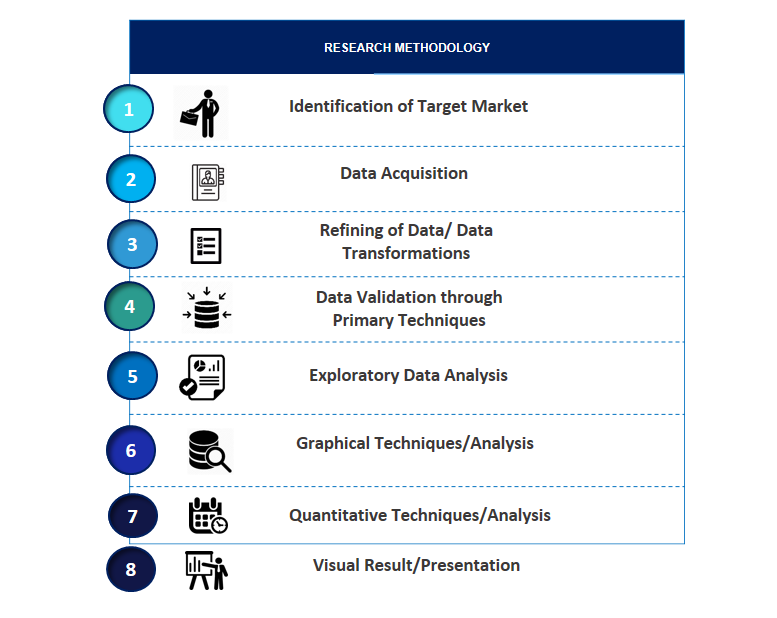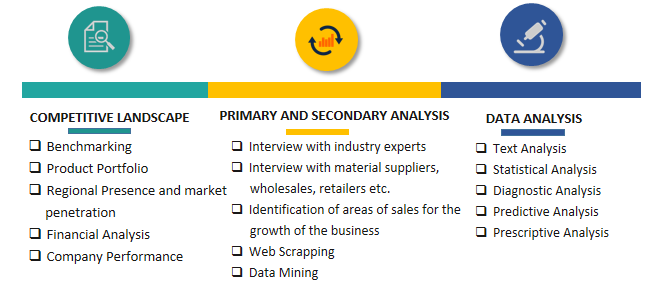Middle East and Africa Carbon Black Market Introduction and Overview
According to SPER Market Research, the Middle East and Africa Carbon Black Market is estimated to reach USD 630.31 million by 2033 with a CAGR of 3.85%.
The report includes an in-depth analysis of the Middle East and Africa Carbon Black Market, including market size and trends, product mix, applications, and supplier analysis. Carbon black is a material produced by the incomplete combustion of coal and coal tar, vegetable matter, or petroleum products such as fuel oil, fluid catalytic cracking tar, and ethylene cracking (also known as acetylene black, channel black, furnace black, lamp black, and thermal black). In addition to being a pigment and reinforcing filler used in tires and other rubber goods, carbon black is also utilized as a wear-protecting component in paints, inks, and plastics.
- In April 2022, SABIC announced carbon black grade N330 as a new market alternative for the Kingdom's building and construction sector, with the goal of improving the quality of cast-in-place concrete projects that demand early drying and increased strength. Premium hollow blocks made with SABIC concrete mix have more power, shorter settings, and a better appearance. The strategy cut casting time by more than 40% while boosting strength by 7%.
- In June 2021, Orion Engineered Carbons GmbH announced the commercial launch of ECORAX Nature, a new line of rubber goods made with industrial-grade, plant-based oils as a sustainable, non-fossil feedstock. Such a product introduction is anticipated to boost the company's black business in the Middle East, Africa, and other regions.
Market Opportunities and Challenges
Opportunities: Carbon black contributes significantly to the development of high-performance electrical and mechanical qualities in strong elastic polymeric polymers like rubber. Thus, carbon black is commonly employed in the fabrication of reinforcing and pigment phases in vehicle tires due to its capacity to extend tire life by avoiding thermal damage. The materials used in the manufacture of automobile tires are thought to play an important role in the comfort and safety aspects of automotive design. When carbon black is added to tire rubber, it improves tensile strength and abrasion resistance greatly. The need for carbon black for rubber and automotive tire manufacture is increasing as the number of automobiles worldwide grows and their performance improves.
Challenges: The carbon black production process is strongly dependent on feedstocks such as crude oil. Oil price variations can have a substantial impact on production costs, affecting the overall affordability of carbon black for producers. Recent global supply chain disruptions caused by geopolitical tensions and logistical impediments have worsened difficulty in securing consistent feedstock supplies or acquiring final products, jeopardizing market stability. The reliance on imports for crucial raw materials exacerbates these difficulties, especially in places like the Middle East and Africa with limited domestic production capacity. Furthermore, the carbon black business is under increased scrutiny because to environmental concerns such as air pollution and greenhouse gas emissions. Carbon black production methods can emit pollutants, forcing regulators to tighten environmental laws.
Market Competitive Landscape
The Middle East and Africa carbon black market is consolidated, with a few significant companies and numerous small ones. Cabot Corporation, Aditya Birla Group, Orion Engineered Carbons GmbH, PCBL Limited, and Continental Carbon Limited are some of the market's leading manufacturers.
Scope of the Report:
| Report Metric | Details |
| Market size available for years | 2020-2033 |
| Base year considered | 2023 |
| Forecast period | 2024-2033 |
| Segments covered | By Process Type, By Application
|
| Regions covered | Saudi Arabia, South Africa, United Arab Emirates, Rest of Middle East and Africa
|
| Companies Covered | Abu Dhabi National Oil Company, Aditya Birla Group, Cabot Corporation, Continental Carbon Limited, Epsilon Carbon Private Limited, Imerys Graphite & Carbon, Omsk Carbon Group, PCBL Limited, Orion Engineered Carbons GmbH.
|
COVID-19 Impact on Middle East and Africa Carbon Black Market
The COVID-19 epidemic had a negative influence on the carbon black market in the Middle East and Africa region because the tire and rubber industry was severely affected. However, the automobile segment's growth is increasing, which will help the market grow. In the Middle East and Africa, the Carbon Black market has rebounded from the pandemic and is expanding rapidly.
Key Target Audience
- Automotive Manufacturers
- Construction Companies
- Industrial Rubber Product Manufacturers
- Paint and Coating Manufacturers
- Plastic Manufacturers
- Rubber Compounders
- Tire Manufacturers
Our in-depth analysis of the Middle East and Africa Carbon Black Market includes the following segments:
|
By Process Type:
|
Furnace Black
Gas Black
Lamp Black
Hexamine
Thermal Black
|
|
By Application:
|
Tires and Industrial Rubber Products
Plastics
Toners and Printing Inks
Paints and Coatings
Textile Fibers
Others
|
|
By Region:
|
Saudi Arabia
South Africa
United Arab Emirates
Rest of Middle East and Africa
|
Key Topics Covered in the Report
- Middle East and Africa Carbon Black Market Size (FY’2024-FY’2033)
- Overview of Middle East and Africa Carbon Black Market
- Segmentation of Middle East and Africa Carbon Black Market By Process Type (Furnace Black, Gas Black, Lamp Black, Hexamine, Thermal Black)
- Segmentation of Middle East and Africa Carbon Black Market By Application (Tires and Industrial Rubber Products, Plastics, Toners and Printing Inks, Paints and Coatings, Textile Fibers, Others)
- Statistical Snap of Middle East and Africa Carbon Black Market
- Expansion Analysis of Middle East and Africa Carbon Black Market
- Problems and Obstacles in Middle East and Africa Carbon Black Market
- Competitive Landscape in the Middle East and Africa Carbon Black Market
- Impact of COVID-19 and Demonetization on Middle East and Africa Carbon Black Market
- Details on Current Investment in Middle East and Africa Carbon Black Market
- Competitive Analysis of Middle East and Africa Carbon Black Market
- Prominent Players in the Middle East and Africa Carbon Black Market
- SWOT Analysis of Middle East and Africa Carbon Black Market
- Middle East and Africa Carbon Black Market Future Outlook and Projections (FY’2023-FY’2033)
- Recommendations from Analyst
1. Introduction
1.1. Scope of the report
1.2. Market segment analysis
2. Research Methodology
2.1. Research data source
2.1.1. Secondary Data
2.1.2. Primary Data
2.1.3. SPER’s internal database
2.1.4. Premium insight from KOL’s
2.2. Market size estimation
2.2.1. Top-down and Bottom-up approach
2.3. Data triangulation
3. Executive Summary
4. Market Dynamics
4.1. Driver, Restraint, Opportunity and Challenges analysis
4.1.1. Drivers
4.1.2. Restraints
4.1.3. Opportunities
4.1.4. Challenges
4.2. COVID-19 Impacts of the Middle East and Africa Carbon Black Market.
5. Market variable and outlook
5.1. SWOT Analysis
5.1.1. Strengths
5.1.2. Weaknesses
5.1.3. Opportunities
5.1.4. Threats
5.2. PESTEL Analysis
5.2.1. Political Landscape
5.2.2. Economic Landscape
5.2.3. Social Landscape
5.2.4. Technological Landscape
5.2.5. Environmental Landscape
5.2.6. Legal Landscape
5.3. PORTER’s Five Forces
5.3.1. Bargaining power of suppliers
5.3.2. Bargaining power of buyers
5.3.3. Threat of Substitute
5.3.4. Threat of new entrant
5.3.5. Competitive rivalry
5.4. Heat Map Analysis
6. Competitive Landscape
6.1. Middle East and Africa Carbon Black Market Manufacturing Base Distribution, Sales Area, Product Type
6.2. Mergers & Acquisitions, Partnerships, Product Launch, and Collaboration in Middle East and Africa Carbon Black Market
7. Middle East and Africa Carbon Black Market, By Process Type (USD Million) 2020-2033
7.1. Middle East and Africa Carbon Black Market Size, Share and Forecast, By Process Type, 2020-2026
7.2. Middle East and Africa Carbon Black Market Size, Share and Forecast, By Process Type, 2027-2033
7.3. Furnace Black
7.4. Gas Black
7.5. Lamp Black
7.6. Hexamine
7.7. Thermal Black
8. Middle East and Africa Carbon Black Market, By Application (USD Million) 2020-2033
8.1. Middle East and Africa Carbon Black Market Size, Share and Forecast, By Application, 2020-2026
8.2. Middle East and Africa Carbon Black Market Size, Share and Forecast, By Application, 2027-2033
8.3. Tires and Industrial Rubber Products
8.4. Plastics
8.4.1. Films and Sheets
8.4.2. Pressure Pipes
8.4.3. Molded Parts
8.5. Toners and Printing Inks
8.6. Paints and Coatings
8.7. Textile Fibers
8.7.1. Nylon
8.7.2. Polyester
8.7.3. Acrylic
8.8. Others
9. Middle East and Africa Carbon Black Market Forecast, 2020-2033 (USD Million)
9.1. Middle East and Africa Carbon Black Market Size and Market Share
10. Middle East and Africa Carbon Black Market, By Region, 2020-2033 (USD Million)
10.1. Middle East and Africa Carbon Black Market Size and Market Share By Region (2020-2026)
10.2. Middle East and Africa Carbon Black Market Size and Market Share By Region (2027-2033)
10.3. Saudi Arabia
10.4. South Africa
10.5. United Arab Emirates
10.6. Rest of Middle East and Africa
11. Company Profile
11.1. Abu Dhabi National Oil Company
11.1.1. Company details
11.1.2. Financial outlook
11.1.3. Product summary
11.1.4. Recent developments
11.2. Aditya Birla Group
11.2.1. Company details
11.2.2. Financial outlook
11.2.3. Product summary
11.2.4. Recent developments
11.3. Cabot Corporation
11.3.1. Company details
11.3.2. Financial outlook
11.3.3. Product summary
11.3.4. Recent developments
11.4. Continental Carbon Limited
11.4.1. Company details
11.4.2. Financial outlook
11.4.3. Product summary
11.4.4. Recent developments
11.5. Epsilon Carbon Private Limited
11.5.1. Company details
11.5.2. Financial outlook
11.5.3. Product summary
11.5.4. Recent developments
11.6. Imerys Graphite & Carbon
11.6.1. Company details
11.6.2. Financial outlook
11.6.3. Product summary
11.6.4. Recent developments
11.7. Omsk Carbon Group
11.7.1. Company details
11.7.2. Financial outlook
11.7.3. Product summary
11.7.4. Recent developments
11.8. PCBL Limited
11.8.1. Company details
11.8.2. Financial outlook
11.8.3. Product summary
11.8.4. Recent developments
11.9. Orion Engineered Carbons GmbH
11.9.1. Company details
11.9.2. Financial outlook
11.9.3. Product summary
11.9.4. Recent developments
11.10. Others
12. Conclusion
13. List of Abbreviations
14. Reference Links
SPER Market Research’s methodology uses great emphasis on primary research to ensure that the market intelligence insights are up to date, reliable and accurate. Primary interviews are done with players involved in each phase of a supply chain to analyze the market forecasting. The secondary research method is used to help you fully understand how the future markets and the spending patterns look likes.
The report is based on in-depth qualitative and quantitative analysis of the Product Market. The quantitative analysis involves the application of various projection and sampling techniques. The qualitative analysis involves primary interviews, surveys, and vendor briefings. The data gathered as a result of these processes are validated through experts opinion. Our research methodology entails an ideal mixture of primary and secondary initiatives.


